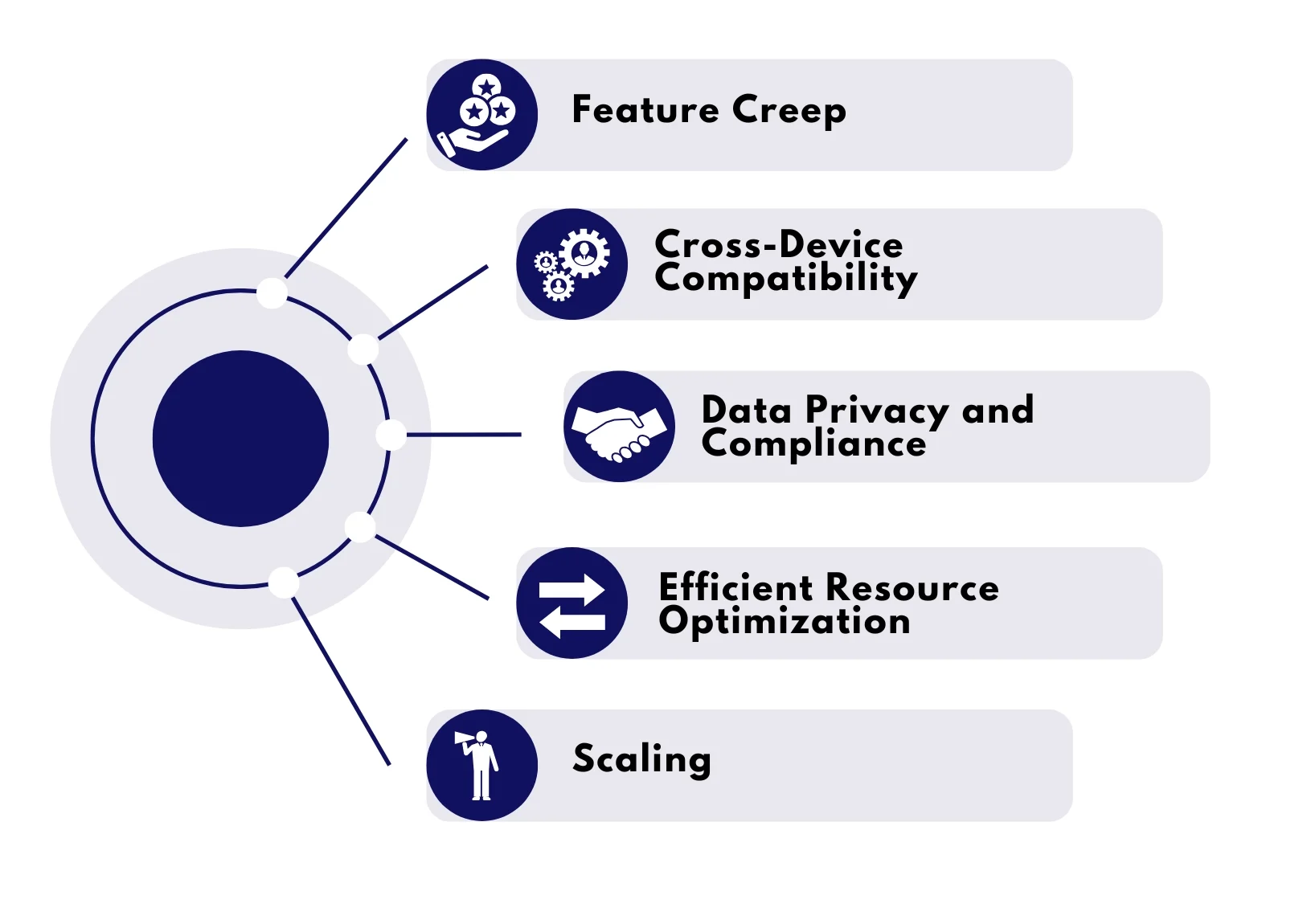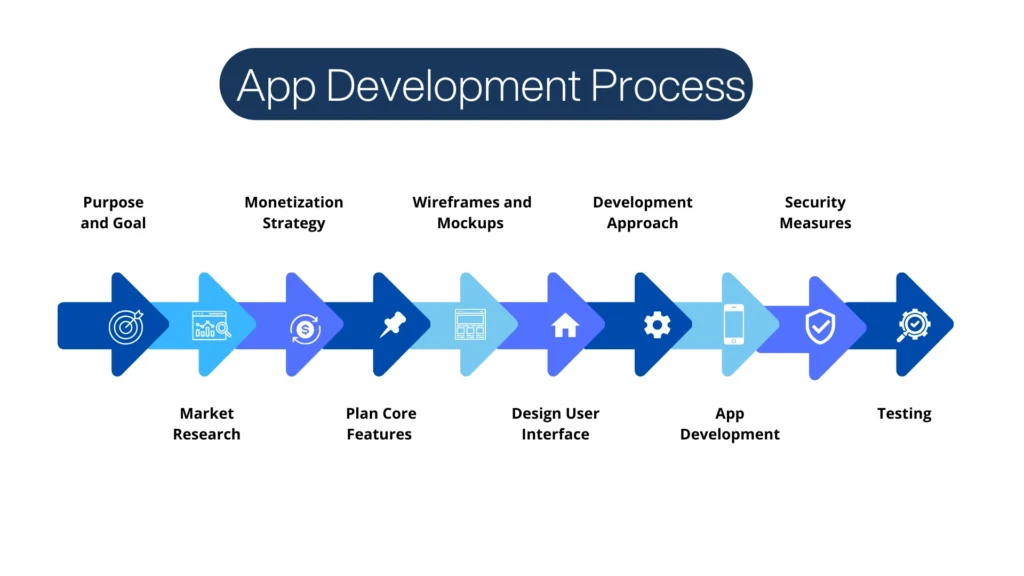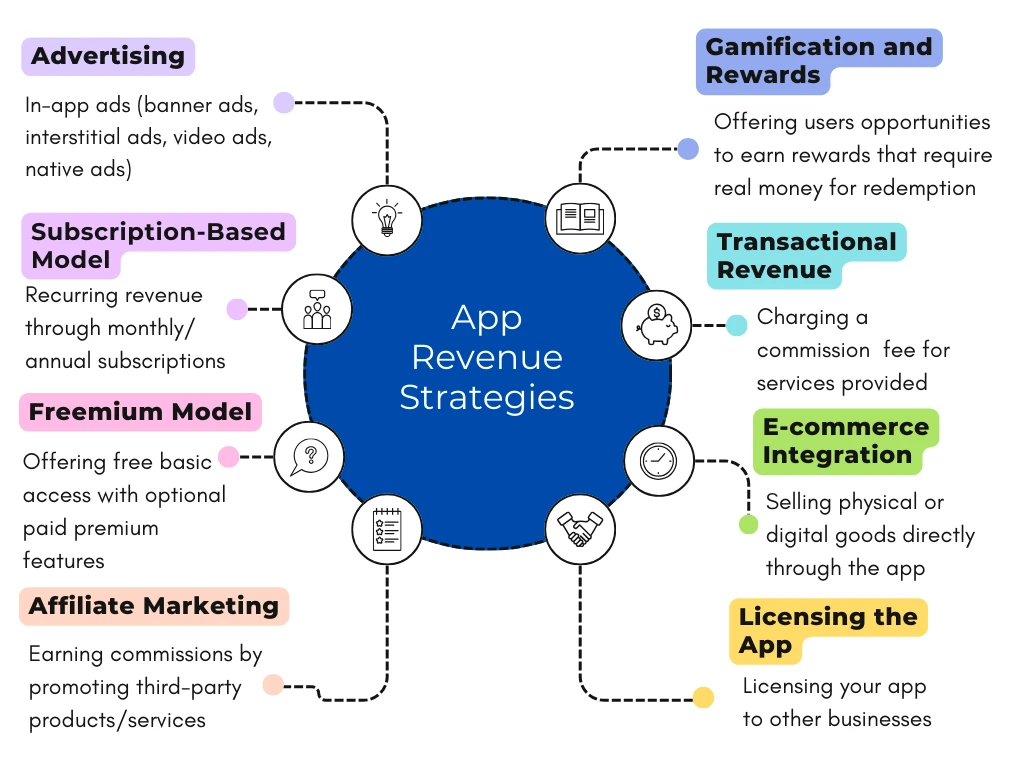Mobile applications revolutionize the way we live, work, and even communicate. From ordering food or maintaining financial records apps have become an indispensable part of the daily routine. The app market, which is set to cross US$ 400 billion plus in revenue, offers immense and untested opportunities for application development.
But how to create an app? While this may looks difficult but it isdoable. If you identify a problem that needs a solution, you have the idea. Similarly, if you have a bright idea to make life easier or entertaining, the possibilities are endless.
In this tutorial, we will guide you step-by-step process of how to develop an app. Starting from the goal towards making your app on top, we’ll cover everything you need to know. Learn how to create an app that stands out in the app stores, aligns with the user’s expectations and brings vision to the life.
The Challenge of Creating an App
Application development can be challenging due to the complexity of modern software and ever-evolving technologies. There are few challenges that often came during pre and post development:

1. Feature creep: Too many features in the development can make the app look cluttered and confusing to the users. It is important to assess which of the features add value to keep the app simple, intuitive, and focused on solving user needs.
2. Cross-device compatibility: Applications need to perform seamlessly on a wide variation in screen size, hardware specification, and operating system. This creates a significant challenge in smaller companies because it requires extensive testing and optimization to deliver a consistent user experience.
3. Data Privacy and Compliance: Data privacy is one of the most important factor users consider while using the app. Developers need to follow the regulations such as GDPR and CCPA in their respective markets to make the data safer.
4. Efficient resource optimization: Resource optimization requires extensive testing and coding. This means that your app works well without using much data, draining the battery or taking too much storage.
5. Scaling: As the number of users increases on the app, it needs to scale without a decline in performance. A developer should create backend systems that scale up with ease and will not crash or slowdown during high usage.
Steps to Create an App
Now that you understand the challenges that may came during development, let’s go through the step-by-step process of how to create an app from scratch and turn the idea into product.

1. Define Your App’s Purpose and Goals
Every successful application has its beginnings with a clear undertaking of what it will do. Poorly defined vision can get you easily lost during the development. The first steps in this process involve clearly articulating the specific problem the app will solve. The problem should be crystal clear and guide every subsequent decision.
Once the problem is identified, start thinking about your target audience. Who are they? If it is an application for remote workers, then your users could be freelancers, digital nomads, or even employees working from home. Go deep into their preferences, pain points, and daily routines. Are they looking for simplicity, a sleek design, or robust features?
Finally, establish measurable goals. These are the benchmarks of success. For instance:
– It will get 10,000 downloads in a period of three months.
– Retaining the daily active user rate at 70% every day.
– Create a recurring revenue stream of $5,000 per month, using subscriptions.
By clearly defining the purpose and goals of the app, you can build an outline that will affect each step of the process of development.
2. Conduct Market Research
Making an application without market research is really like setting sail without some kind of map. Market research helps find the gaps in the prevailing market, understand the intention of the users, and analyze their competitors to assure that the app will deliver unique value.
Start by researching similar apps in your niche. Next, get direct insight from users. For that, it is good to conduct surveys and focus groups. You can ask about the features that potential users would want, how they solve the problem that your app does, and what they hate most about the existing solutions.
Besides that, understand the industry trends and ensure your application meets the expectations of the users. For example, there is a trend of sustainability across industries. If you are developing an app for grocery shopping, adding features like eco-friendly product suggestions may give you an edge over others.
It’s by integrating competitors’ analysis, user feedback, and trend research that you know what will make your application stand out.
3. Choose a Monetization Strategy
Monetization strategy will keep your app profitable while keeping the user experience intact. Picking the right model depends on your audience. In-app advertisement is an effective means of generating revenue-especially when it does not disturb the user experience in any way.
On the other hand, in-app purchases will give optional capabilities or upgrades to the users who would like more advanced possibilities. Make sure that the strategy aligns with the purpose of your app and enhances the user experience. Here are some of the strategies that you can use to earn through your app:

4. Plan Core Features and Functionality
A successful app holds a balance between simplicity and functionality. Overloading of features in an app whelms the user by a lot, while undershooting the features that makes an impact. Planning the key features involves identifying the essential, or “must haves,” for your application, leaving room for future enhancements.
Once you have planned the core features, think about secondary functionalities that could enhance the user experience in later updates. For instance, the financial tracker could eventually include AI-driven savings recommendations or even bank account integrations. This will ensure a phased approach from the very beginning. It is both effective and scalable for growth.
5. Create Wireframes and Mockups
Wireframes and mockups are visual insights into your application before the actual development. Wireframes let you think about layout and structure by placing a map of user navigation and key functionalities. This stage creates an application with logical and intuitive design.
With mockups, you can add design elements such as color, typography, and branding. That helps you to better imagine the final product and do iterations based on user feedback. A well-designed mockup will keep your app engaging for your target audience and usable.
This planning phase is important because it allows to identify problems that arise in the design and solve them early, which saves time and resources during the development process.
6. Design the User Interface and User Experience
Your design should be beautiful and functional. A beautiful interface will attract people, but a seamless experience will keep them there. Your application should intuitively be navigable with a logical flow that gently guides users through the basic set of key tasks. It uses consistent visual elements and interactions that reinforce familiarity throughout.
Usability testing of your designs by real users can be a very valuable source of feedback. Make the adjustments based on their input so that they may not get confused or upset while using it.
7. Select the Development Approach
Your resources, timeline and expertise will help you to select the development apporach. You should determine if you are developing your application yourself, a team, or outsourcing some development.
Clearly define the priorities of development, starting with the core features identified during the planning phase. Gradually add more functionality over time, ensuring each feature will fit seamlessly into the overall structure.
This structured approach will keep you on track, close off the possibility of scope creep, and allow you to deliver a quality product.
8. Develop the App
Building your app means taking that design and turning it into an actual product. First, you need to lay a good foundation, making sure the core features work well and are stable. Keep the development process organized by breaking down tasks into manageable sets of steps and following these regularly for discovering and solving any potential problem in the early stages.
Your app should be designed to scale. Even when you are starting small, this design will enable your app to grow with the evolution of user needs and technology.
9. Implement Security Measures
Trust means a lot when it comes to users, and one should ensure that strong security measures are taken to secure sensitive data. Secure all data exchange in your app. Also, ensure that authentication methods are trustworthy to keep user accounts safe.
Compliancy with data protection legislation means that your app follows the law and builds up trust and credibility with your users. Any developer should know regulations in their target market to avoid unexpected pitfalls. By focusing on security, you build an app that will be trusted and that will be used with confidence.
10. Test the App Thoroughly
Testing is one of the most important step in the development of an application. It involves thoroughly testing your app against the core requirements. Begin your testing with the functional part. Verify that all the core features are working in the same way as they should be. Perform compatibility testing to ensure the smooth performance of the app across devices and operating systems.
That way, you can expand your audience without any sort of technical barrier. Encourage the early users to give their feedback and integrate the information in making the final touches. Comprehensive testing reduces the post-launch issues and sets everything ready for the successful release of an app.
Conclusion
The success of any application is based on a number of vital points. Clearly defined purpose and profound knowledge of the target audience-make your app answer the real needs of the users. Thorough market research will help identify trends, gaps, and user preferences that will help your app be outstanding in the ocean. A balance between simplicity and cross-device compatibility are crucial for users to retain their trust and loyalty.
Going forward, it’s all about continuous improvement. Bug fixes, advanced feature integrations such as AI or IoT, and updates concerning market trends will keep your app fresh. The key should be to take user feedback to fine-tune features and improve the user experience.
Effective marketing strategies include app store optimization and social media outreach for better reach. In the end, innovativeness and user centricity are the keys to long-term success in the dynamic ecosystem of apps.
Agile Methodologies for Software Development
To ensure that the development process is handled efficiently and at scale, agile methodologies have become essential. These methodologies enable fast and flexible development cycles, ensuring that the development team can quickly adapt to changes and client needs.
If you want to learn more about how agile methodologies can enhance your app development process, we invite you to read our article on Agile Methodologies for Software Development.
If you want to transform your idea into a successful app, at GeneXus Consulting we help you design, develop, and optimize your app with the best tools and strategies on the market. Contact us for a personalized consultation and discover how we can support you in this process!




